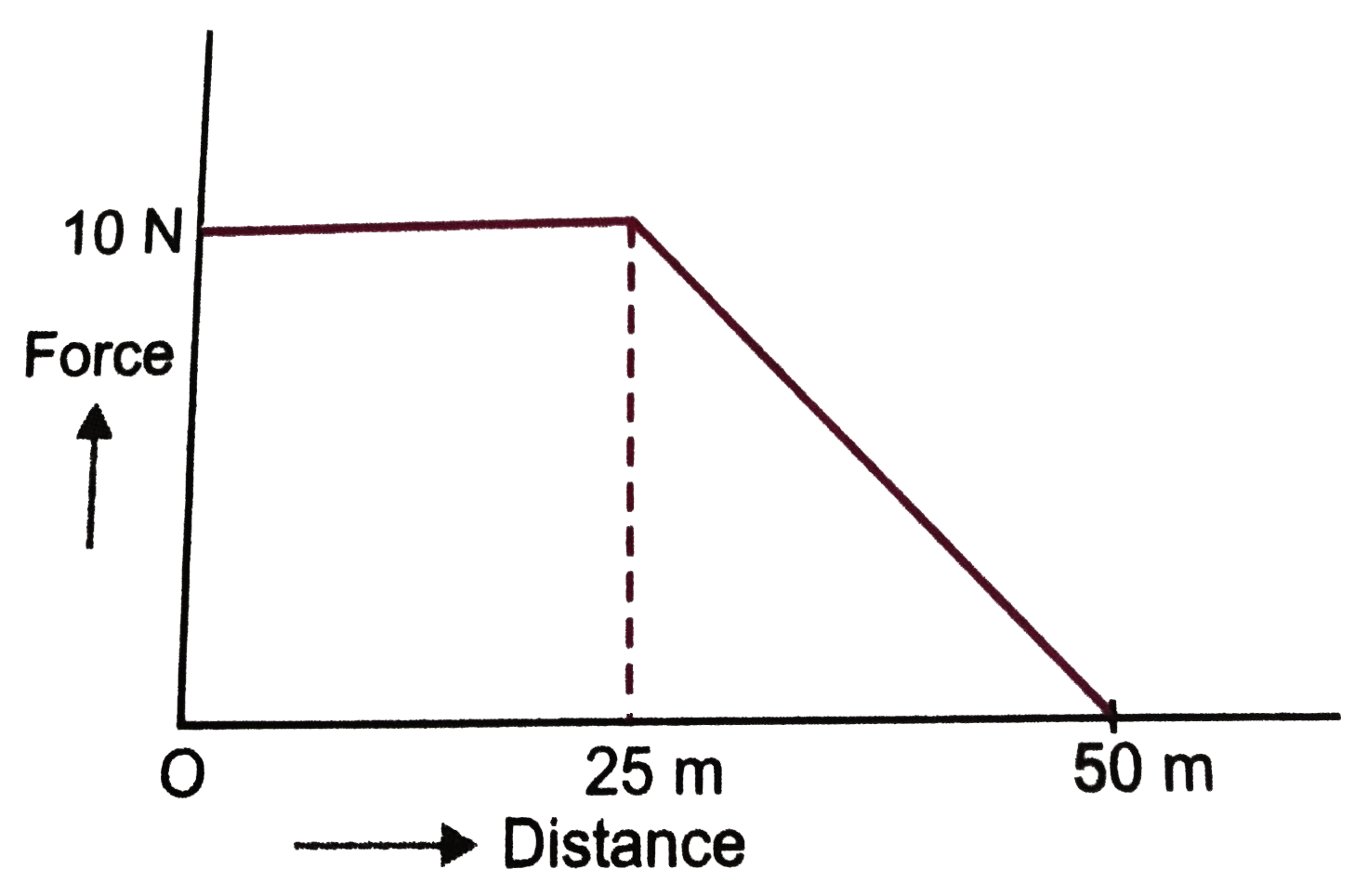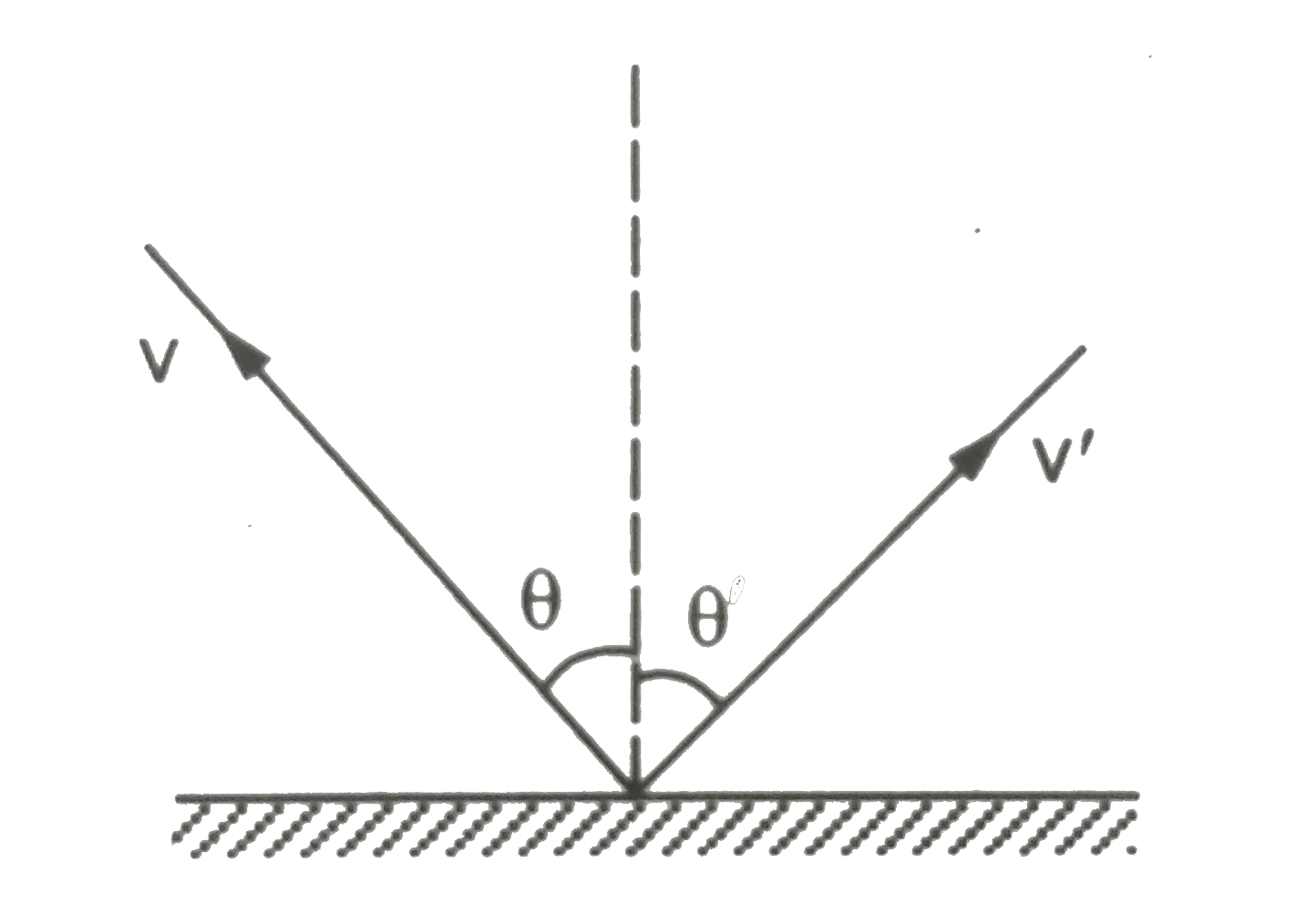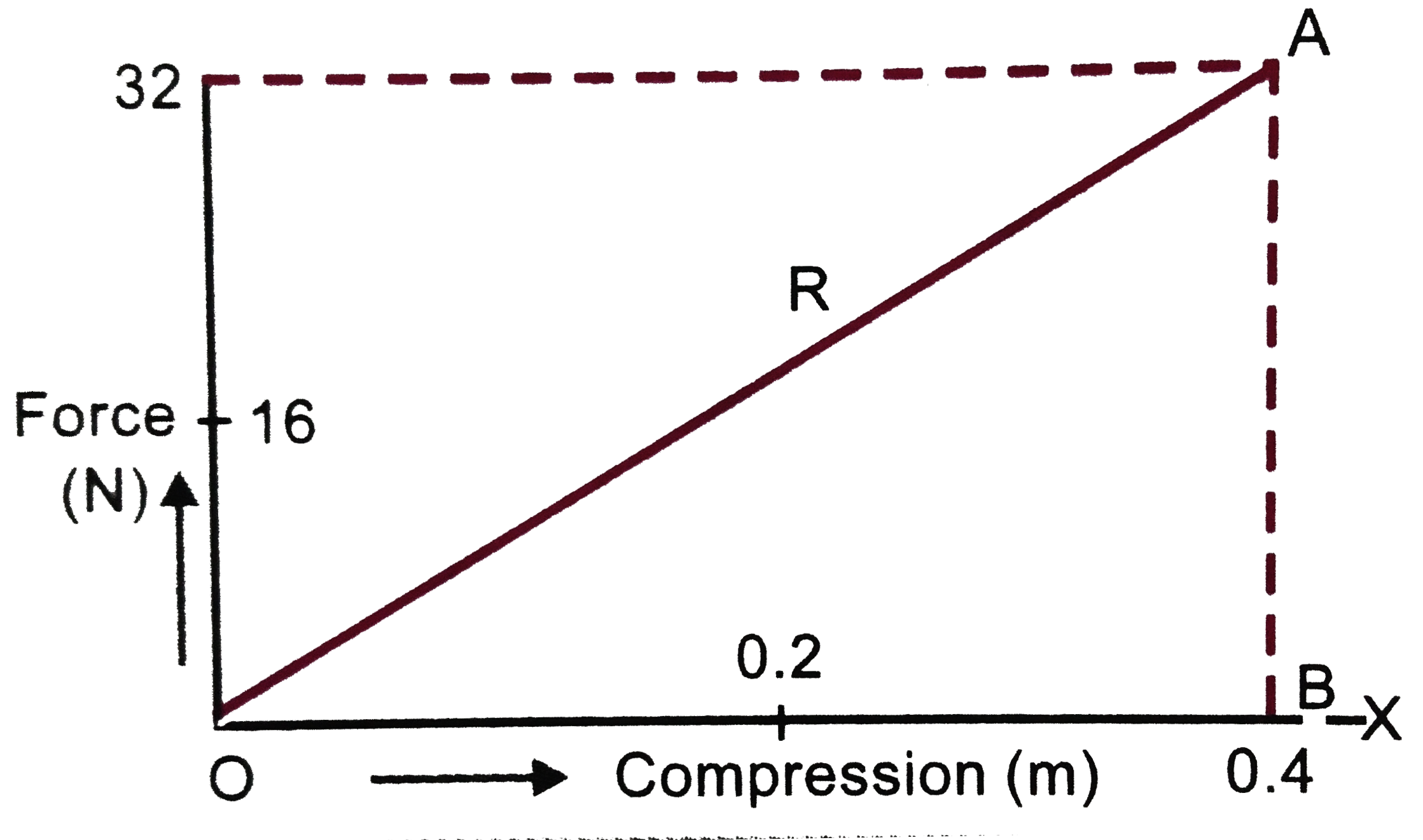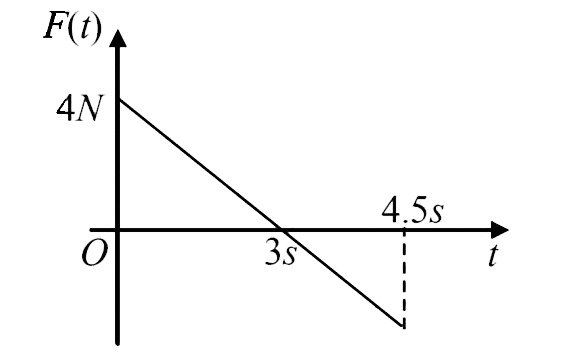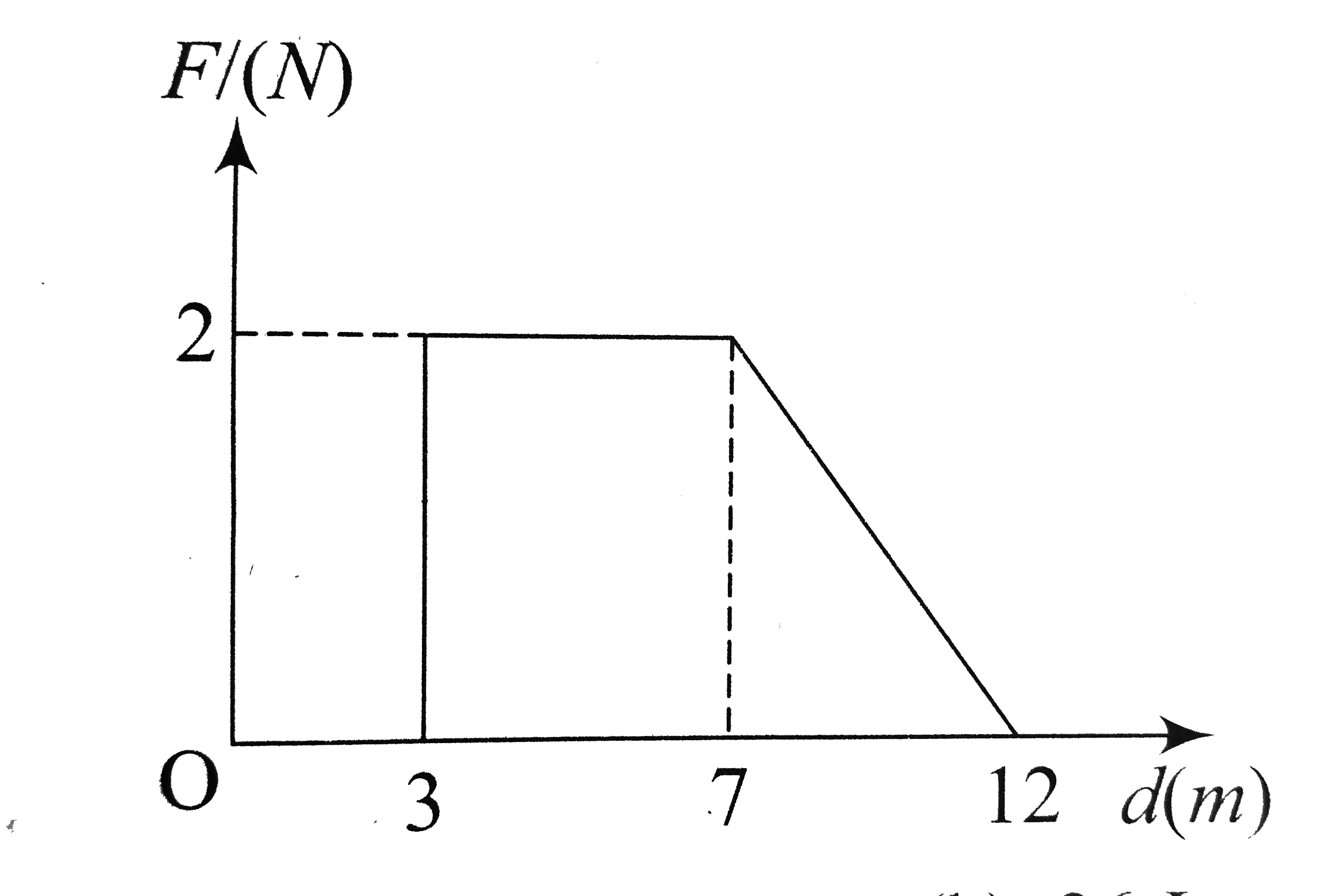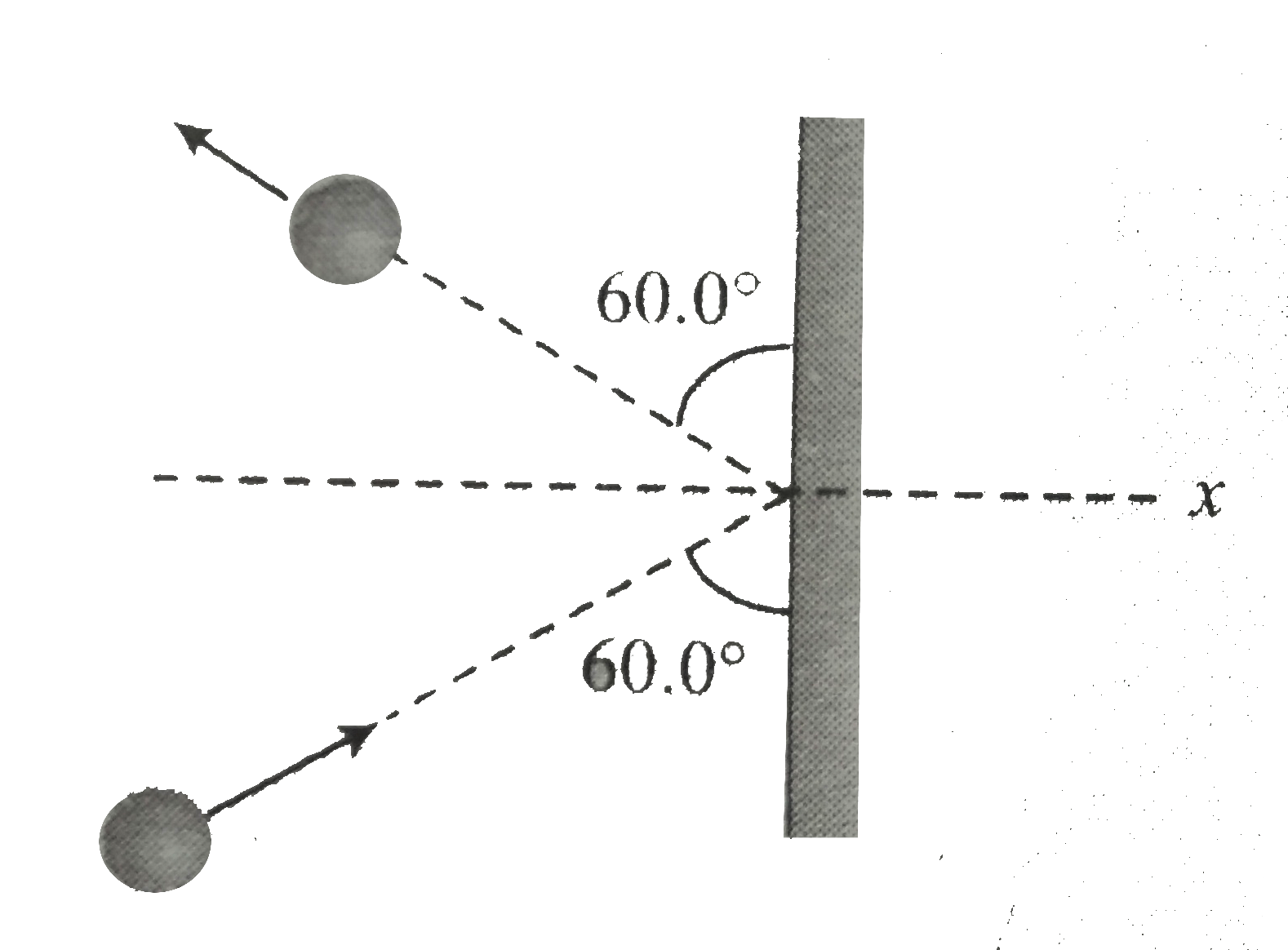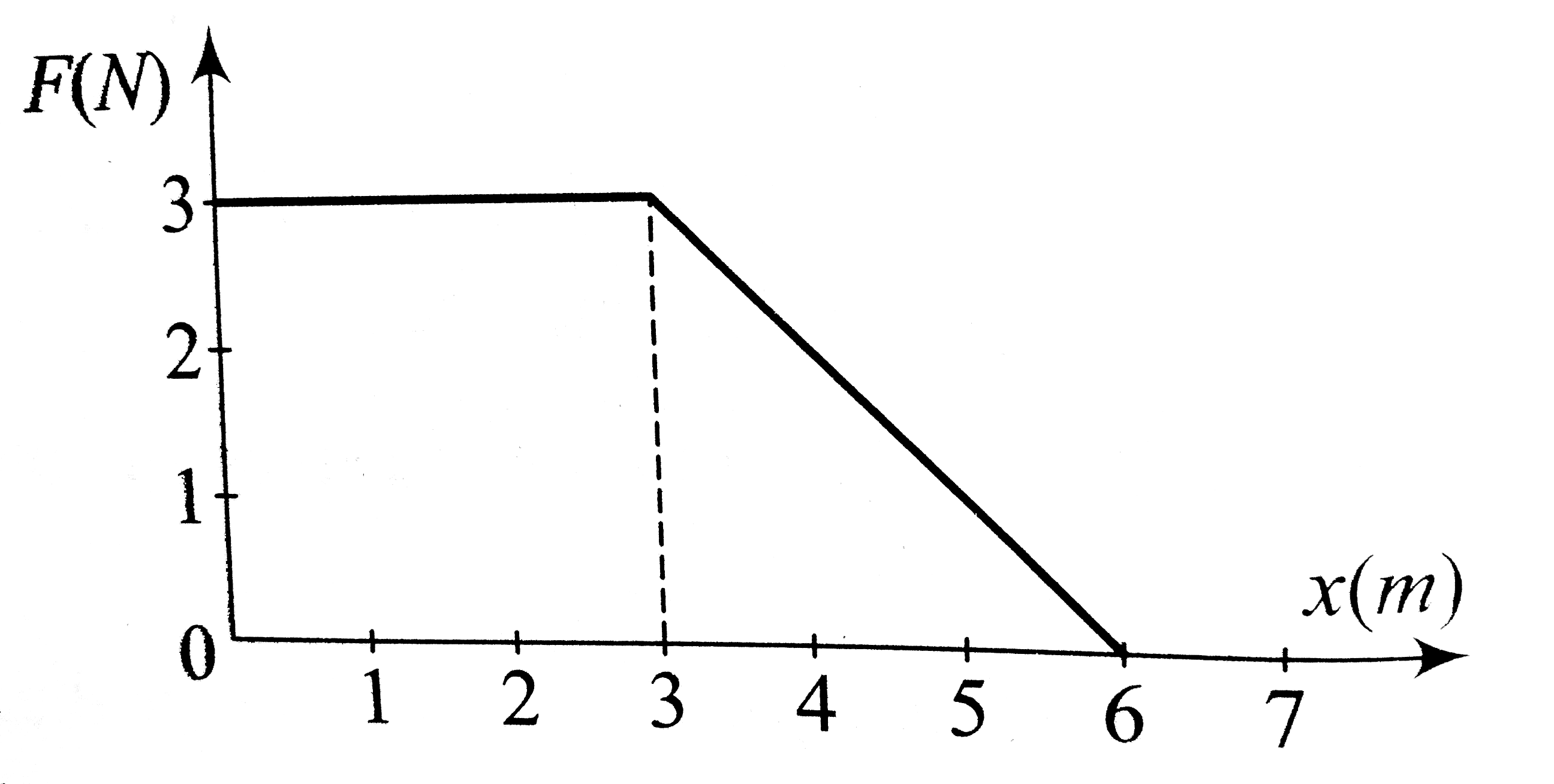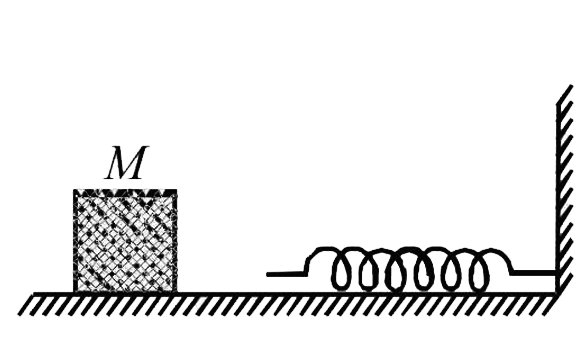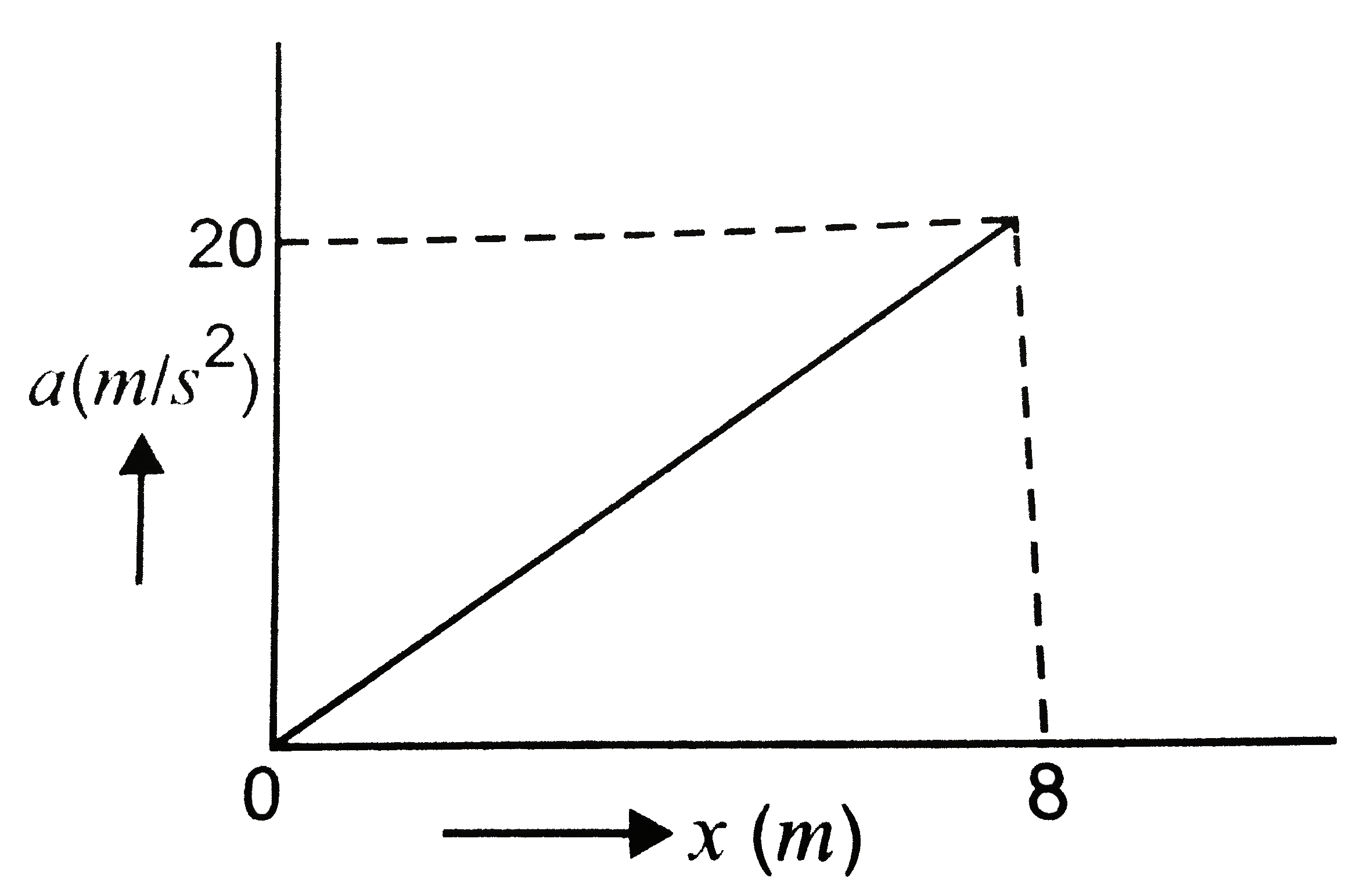JEE (Main and Advanced) from PRADEEP PHYSICS (HINGLISH) WORK, ENERGY AND POWER for Class 11
| Class 11 | PHYSICS |
| Chapter | WORK, ENERGY AND POWER |
| PRADEEP PHYSICS (HINGLISH) | JEE (Main and Advanced) |
| Medium | English |
| Academic Year | 2023-2024 |
Question 28
A body of mass 0.3kg is taken up an inclined plane of length 10m and height 5m, and then allowed to slide down to the bottom again. The coefficient of friction between the body and the plane is 0.15.
What is the
(a) work done by the gravitational force over the round trip ?
(b) work done by the applied force on the upward journey ?
(c) work done by the frictional force over the round trip ,
(d)kinetic energy of the body at the end of the trip ?View SolutionQuestion 33
A toy rocket of mass 0.1 kg hass a small fuel of mass 0.02 kg, which it burns out in 3s. Starting from rest on a horizontal smooth track, it gets a speed of 20ms−1 after the fuel is burnt out. What is the approcimate thrust of the rocket ? What is the energy content per unit mass of the fuel ? (Ignore the small mass variation of teh rocket during fuel burning).View SolutionQuestion 35
A body of mass 2kg is resting on rough horizontal surface. A force 20N is applied to it for 10s parallel to the surface. If coefficient of kinetic friction between the surfaces in contact in 0.2. Caluculate (i) work done by applied force in 10s. (ii) change in KE of object in 10s.
Take g=10m/s2View SolutionQuestion 41
A horizontal force of 5N acts on a body of mass 2kg initally at rest. It starts moving on a table having coefficient of friction =0.2 Calculate
(i) work doen by the applied force in 5s
(ii) work done by force of friction in 5s
(iii) work done by net force is 5s
(iv) change in K.E. of the body in 5s.
What do you conclude from this ?View SolutionQuestion 49
The string of a pendulum is 2.0m long. The bob is pulled sideways so that the string becomes horizontal and then the bob is released. What is the speed with which the bob arrives at the lowest point ? Assume theat 10% of initial energy is dissipated against air resistance. Take g=10m/s2View SolutionQuestion 59
When slow neutrons are incident on a target containing .92U235 , a possitle fission reactionis
.92U235+n→.56Ba141+36Kr92+3n+Q
Estimate the amount of energy released using the following data :
M[.92U235]=235.04u,
M[.56Ba141]=140.91u,
M[.36Kr92]=91.926u,
Mn=1.0087u.
Take 1u=1.661×10−27kg.
1MeV=1.602×10−13JView SolutionQuestion 60
A nucleus of radium (.88Ra226)
decays to .86Rn222
by emisson of α− particle (.2He4) of energy 4.8MeV. If meass of .86Rn222=222.0a.m.u mass of .2He4 is 4.003 a.m.u. and mass of .88Ra226 is 226.00826 a.m.u., then calculate the recoil energy of the daughter nucleus. Take 1a.m.u.=931MeVView SolutionQuestion 76
A nucleus of radium (.88Ra226)
decays to .86Rn222
by emisson of α− particle (.2He4) of energy 4.8MeV. If meass of .86Rn222=222.0a.m.u mass of .2He4 is 4.003 a.m.u. and mass of .88Ra226 is 226.00826 a.m.u., then calculate the recoil energy of the daughter nucleus. Take 1a.m.u.=931MeVView SolutionQuestion 89
A sphere of mass m collides against a pendulum of mass m with horizontal velocity υ90). (i) Calculate the maximum height reached by the pendulum if the masses scatter elastically along the line of initial motion, (ii) What is the maximum height reached by the pendulum if the two masses stick together ?View SolutionQuestion 90
A ball moving on a horizontal frictionless plane hits an identical ball at rest with a velocity of 0.5m/s. If the collision is elastic, calculate the speed imparted to the target ball, if the speed of projectile after the collision is 30cm/s. Show that the two balls will move at right angles to eachother, after the collision. View SolutionQuestion 98
A proton is kept at rest. A positively charged particle is released from rest at a distance d in its field. Consider two experiments, one ini which the charged particle is also a proton and in another, a position. In the same time t, the work done on the two moving charged particles is View SolutionQuestion 104
The potential energy function for a particle executing simple harmonic motion is given by V(x)=12kx2, where k is the force constant of the oscillatore. For k=12Nm−1, show that a particle of total energy 1 joule moving under this potential must turn back when it reaches x=±2m.View SolutionQuestion 105
Two identical ball bearings in contact with each other and resting on a frictionless table are hit head on by another ball bearing of the same mass moving initially with a speed v, figure,. If the collision is elastic, which of the following is a possible result after collisioin?
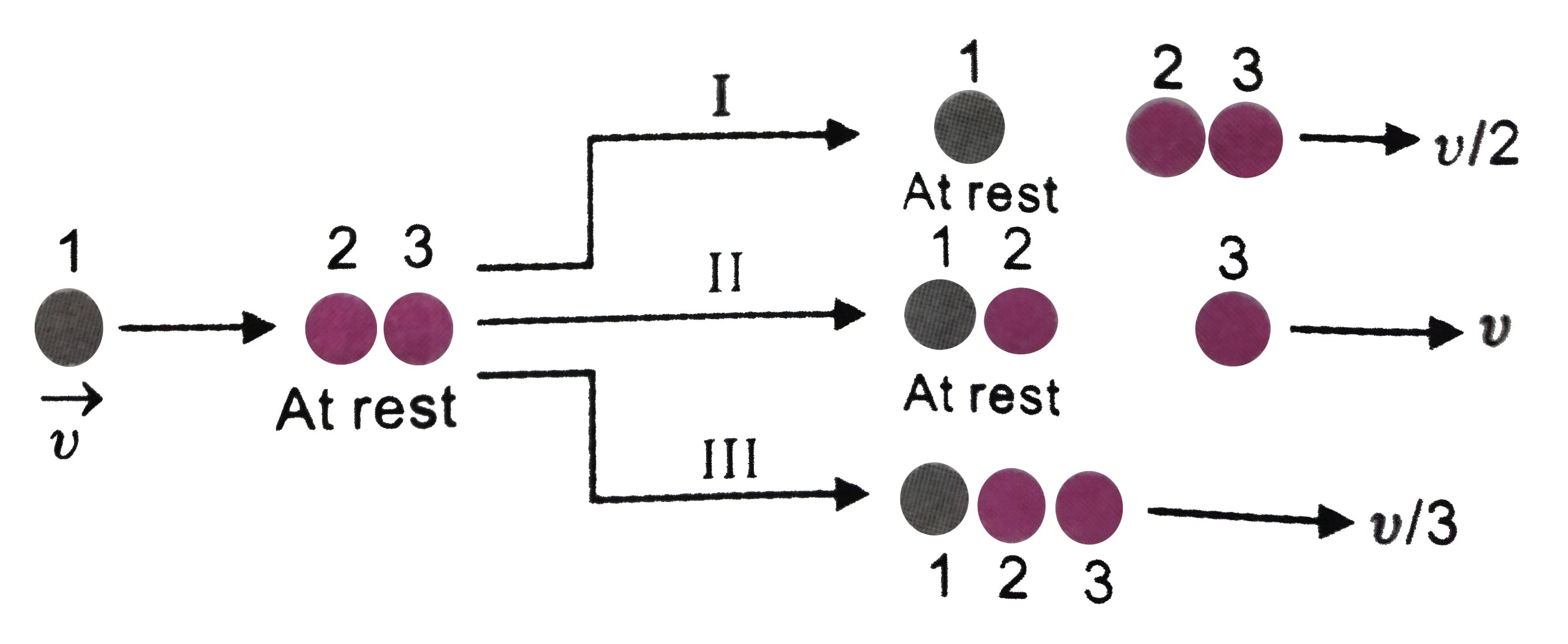 View Solution
View SolutionQuestion 112
In a shotput event, an athlete throws the shotput of mass 10kg with an initial speed of 1ms−1 at 45∘ from a heigth 1.5m above ground. Assuming air resistance to be negligible and acceleration due to gravity to be 10ms−2, the kinetic energy of the shotput when it just reaches the ground will be View SolutionQuestion 114
A cricket ball of mass 150g moving with a speed of 126km/h hits at the middle of the bat, held firmly at its position by the batman. The ball moves straight back to the bowler after hitting the bat. Assuming that collision between ball and bat is completely elastic and the two remain in contact for 0.001s, the force that the batsman had to apply to hold the bat firmly at its place would be View SolutionQuestion 116
A bullet of mass m fired at 30∘ to the horizontal leaves the barrel of the gun with a velocity υ. The bullet hits a soft target at a height h above the ground while it is moving downward and emerges out with half the kinetic energy it had before hitting the target.
Which of the following statments are correct in respect of bullet after it emerges out of the target ?View SolutionQuestion 123
A point particle of mass m, moves long the uniformly rough track PQR as shown in figure. The coefficient of friction, between the particle and the rough track equals μ. The particle is released, from rest from the point P and it comes to rest at a point R. The energies, lost by the ball, over the parts, PQ and QR, of the track, are equal to each other, and no energy is lost when particle changes direction from PQ to QR.
The value of the coefficient of friction μ and the distance x (=QR), are, respectively close to:
 View Solution
View SolutionQuestion 124
A person trying to lose weight by burning fat filts a mass of 10kg upto a being of 1m1000 time . Assume that the potential energy lost each time be lower the mass is dissipated . How much far will be use up considering the work done only when the weight is lifted up ? Far supplies 3.8×107J of energy per kg wich is canverted to mechanical energy with x20% efficiency rate Take =9.8ms−2 View SolutionQuestion 125
A water cooler of storages capacity 120 liters can cool water at a constant rate of P watts. In a closed circulation system (as shown schematically in the figure), the water from the cooler is used to cool an external device that generates constantly 3kW of heat (thermal load). The temperature of water fed into the device cannot exceed 30∘C and the entire stored 120 liters of water is initially cooled to 10∘C. The entire system is thermally insulated. The minimum value of P ( in watts) for which the device can be operated for 3hours is

(Specific heat of water is 4.2kJkg−1K−1 and the density of water is 1000kgm−3)View SolutionQuestion 136
It is well known that a rain drop falls under the influence of the downward gravitational force and the opposing resistive force. The latter is known to be proportional to the speed of the drop, but is otherwise undetermined. Consider a drop of mass 1.0g falling from a height of 1.00km. It hits the ground with a speed of 50.0ms−1 (a) What is the work done by the gravitational force ? (b) What is the work done by the unknown resistive force ?View SolutionQuestion 139
An explosion blows a rock into three parts. Two parts go off at right angles to each other . These two are 1kg first part moving with a velocity of 12ms−1and2kg second part moving with a velocity of 8ms−1. If the third part flies off with a velocity of 4ms−1. Its mass would beView SolutionQuestion 168
On a friction surface a block a mass M moving at speed v collides elastic with another block of same mass M which is initially at rest . After collision the first block moves at an angle θ to its initial direction and has a speed v3. The second block's speed after the collision isView SolutionQuestion 169
Figure shows a smooth curved track terminating in a smooth horizontal part. A spring of spring constant 400 N/m is attached at one end of a wedge fixed rigidly with the horizontal part. A 40 g mas is released from rest at a height of 4.9 m n the curved track. Find the maximum compression of the spring.
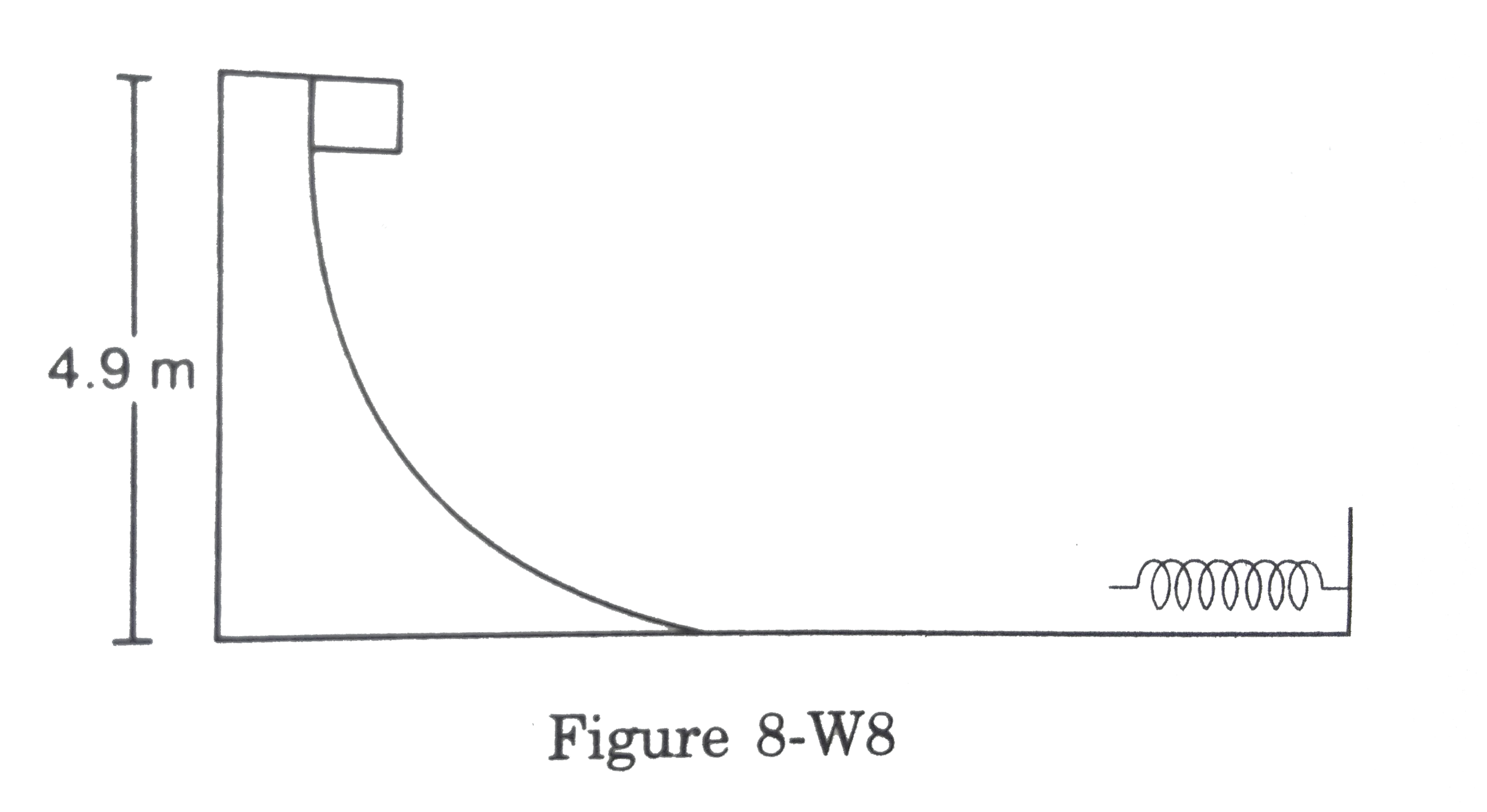 View Solution
View SolutionQuestion 182
A shell is fired from a cannon with a velocity v(m/sec.) at an angle θ with the horizontal direction. At the highest point in its path it explodes into two pieces of equal mass. One of the pieces retraces its path to the cannon and the speed (in m/sec.) of the other piece immediately after the explosion isView SolutionQuestion 190
A wooden block of mass 10gm is dropped from the top of a tower 100m high. Simultaneously, a bullet of mass 10gm is fired from the foot of the tower vertically upwards with a velocity of 100m/sec, figure. If the bullet is embedded in it, how high will it rise above the tower before it starts falling ? (Consider g=10m/sec2)
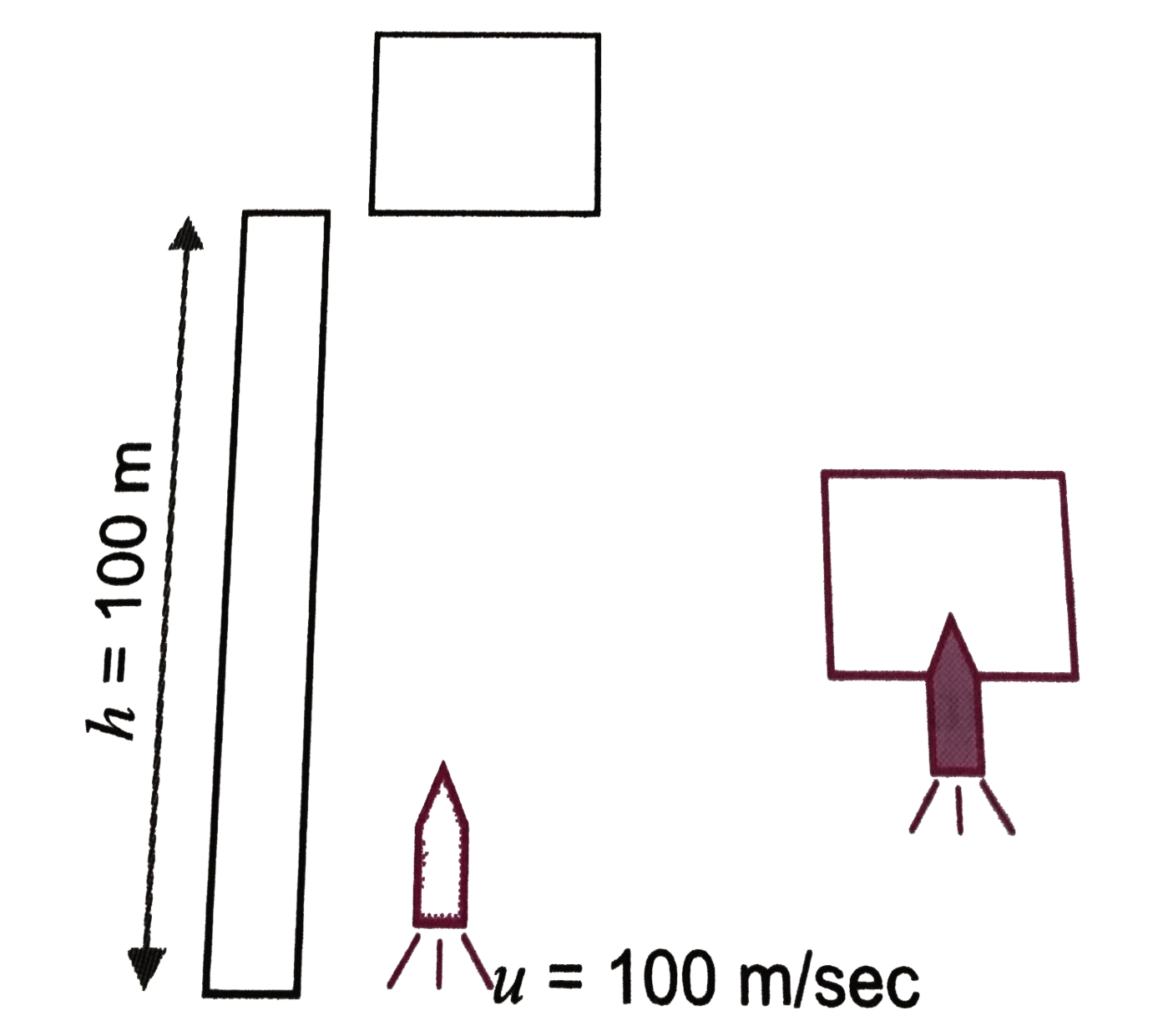 View Solution
View SolutionQuestion 194
A block of mass 0.18kg is attached to a spring of force constant 2N/m The coefficient of friction between the block and the force is 0.1 insitially its block is at rest and the block as spring is an streched , As impalse is given to the block as shown in the figure . The block sides a distance of 0.06 in and comes to the first time . The initial velocity of the for blocks is mis V=N10 then N is .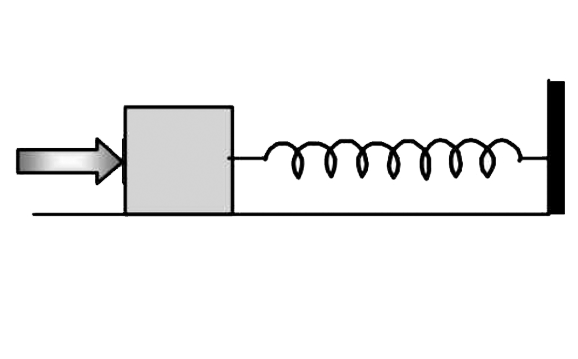 View Solution
View SolutionQuestion 219
Work is said to be done by a force acting on a body, provided the body is displaced actually in any direction except in a direction perpendicular to the direction of the force. Mathematically, W=→F.→c=Fscosθ, Whereas energy is capacity of a body to do the work, power is the rate at which the body can do the work.
P=Wt=→F.→st=→F.→υ
Both, work and energy are measured in joule and power is measured in watt.
With the help of the comprehension given above, choose the most appropriate alternative for each of the following question :
A box is pushed through 4.0m across a floor offering 100N resistance. Work done by the applied force is View SolutionQuestion 220
Work is said to be done by a force acting on a body, provided the body is displaced actually in ay direction except in a direction perpendicular to the direction of the force. Mathmatically, W=→F.→c=Fscosθ, Whereas eenrgy is capacity of a body to do the work, power is the rate at which the body can do the work.
P=Wt=→F.→st=→F.→υ
Both, work and energy are measured in joule and power is measured in watt.
With the help of the comprehension given above, choose the most appropriate alternative for each of the following question :
In the above question, work done by the resisting force is View SolutionQuestion 221
Work is said to be done by a force acting on a body, provided the body is displaced actually in ay direction except in a direction perpendicular to the direction of the force. Mathmatically, W=→F.→c=Fscosθ, Whereas eenrgy is capacity of a body to do the work, power is the rate at which the body can do the work.
P=Wt=→F.→st=→F.→υ
Both, work and energy are measured in joule and power is measured in watt.
With the help of the comprehension given above, choose the most appropriate alternative for each of the following question :
In the above question, work done by gravity is View SolutionQuestion 222
Work is said to be done by a force acting on a body, provided the body is displaced actually in any direction except in a direction perpendicular to the direction of the force. Mathematically, W=→F.→c=Fscosθ, Whereas energy is capacity of a body to do the work, power is the rate at which the body can do the work.
P=Wt=→F.→st=→F.→υ
Both, work and energy are measured in joule and power is measured in watt.
With the help of the comprehension given above, choose the most appropriate alternative for each of the following question :
A truck draw a tractor of mass 1000kg at a steady rate of 20ms−1 on a level road. The tension in the coupling is 2000N. Power spent on the tractor is View SolutionQuestion 223
Potential energy of a body is the energy possessed by the body by virtue of its position. P.E.=mgh where the symbols have their usual meaning. Kinetic energy of a body is the energy possessed by the body by virtual of its velocity.
K.E.=12mυ2
Energy can neither be created nor be destroyed. However energy can be changed from one form to other, such that energy appearing in one form is equal to the energy disappearing in the other form.
With the help of the passage given above, choose the most appropriate alternative for each of the following question :
A body of mass 1kg is allowed to fall freely under gravity. The momentum of the body 5 second after it starts falling is View SolutionQuestion 224
Potential energy of a body is the energy possessed by the body by virtue of its position. P.E.=mgh where the symbols have their usual meaning. Kinetic energy of a body is the energy possessed by the body by virtual of its velocity.
K.E.=12mυ2
Energy can neither be created nor be destroyed. However energy can be changed from one form to other, such that energy appearing in one form is equal to the energy disappearing in the other form.
With the help of the passage given above, choose the most appropriate alternative for each of the following question :
Kinetic energy of the body at the same time is View SolutionQuestion 225
Potential energy of a body is the energy possessed by the body by virtue of its position. P.E.=mgh where the symbols have their usual meaning. Kinetic energy of a body is the energy possessed by the body by virtual of its velocity.
K.E.=12mυ2
Energy can neither be created nor be destroyed. However energy can be changed from one form to other, such that energy appearing in one form is equal to the energy disappearing in the other form.
With the help of the passage given above, choose the most appropriate alternative for each of the following question :
The body will attain this K.E. when it falls freely from a height of View SolutionQuestion 226
Potential energy of a body is the energy possessed by the body by virtue of its position. P.E.=mgh where the symbols have their usual meaning. Kinetic energy of a body is the energy possessed by the body by virtual of its velocity.
K.E.=12mυ2
Energy can neither be created nor be destroyed. However energy can be changed from one form to other, such that energy appearing in one form is equal to the energy disappearing in the other form.
With the help of the passage given above, choose the most appropriate alternative for each of the following question :
Velocity of the body on striking the ground will be View SolutionQuestion 227
Potential energy of a body is the energy possessed by the body by virtue of its position. P.E.=mgh where the symbols have their usual meaning. Kinetic energy of a body is the energy possessed by the body by virtual of its velocity.
K.E.=12mυ2
Energy can neither be created nor be destroyed. However energy can be changed from one form to other, such that energy appearing in one form is equal to the energy disappearing in the other form.
With the help of the passage given above, choose the most appropriate alternative for each of the following question :
The ratio of potential energy to kinetic energy at a height of 62.5m above the ground is View SolutionQuestion 236
Constant as eliptical rail PQ in the varticle plain with OP==3m and OQ=4m . A block of mass 1 kg is pailed along the rail from P to Q with a force of 18N , which is always parallel to less PQ Assuming are frictionless losess , the kinetic energy the block when 0 reches Q is (n×10) pales . THe velie of a (Take acceleration due to gravity ) =10ms−2)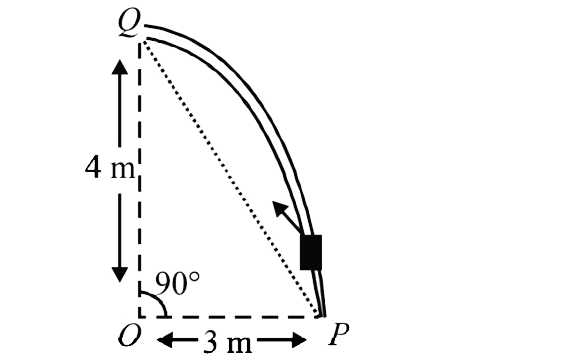 View Solution
View SolutionQuestion 258
This question has statement 1 and statement 2 . Of the four choice given after the Statement , choose the one that best describe the two Statement .
If the spring S1and S2 of force constant k1 and k2 respectively , are streached by the same force , it is found that more work is done on spring S1 then on spring S2
Statement -1: If statement by the same answer work done on S1 work on S1 is more then S2
Statement - 2 : k1<k2View SolutionQuestion 260
This question has statement I and statement II. Of the four choices given after the statements, choose the one that best describes the two statements.
Statement I: A point particle of mass m moving with speed v collides with stationary point particle of mass M. If the maximum energy loss possible glven as f(12mv2) then f=(mM+m)
Statement II: Maximum energy loss occurs when the particles get stuck together as a result of the collision. View Solution
All Exercises from PRADEEP PHYSICS (HINGLISH) Class 11 PHYSICS WORK, ENERGY AND POWER
- ASSERTION-REASON TYPE QUESTIONS
- COMPREHENSION
- FILL IN THE BLANKS
- INTEGER TYPE QUESTIONS
- JEE (MAIN AND ADVANCED)
- MULTIPLE CHOICE QUESTION
- NCERT( MULTIPLE CHOIDE QUESTIONS-1)
- PROBLEMS FOR PRACTICE
- ADDITIONAL EXERCISES
- ADVANCED PROBLEMS FOR COMPETITIONS
- CONCEPTUAL PROBLEMS
- CURIOSITY QUESTIONS
- HIGHER ORDER THINKING SKILLS
- LONG ANSWER QUESTION
- NCERT EXERCISES WITH SOLUTIONS
- SAMPLE PROBLEM
- SHORT ANSWER QUESTION
- SOLVED EXAMPLES
- VALUE BASED QUESTION
- VERY SHORT ANWER QUESTION.


